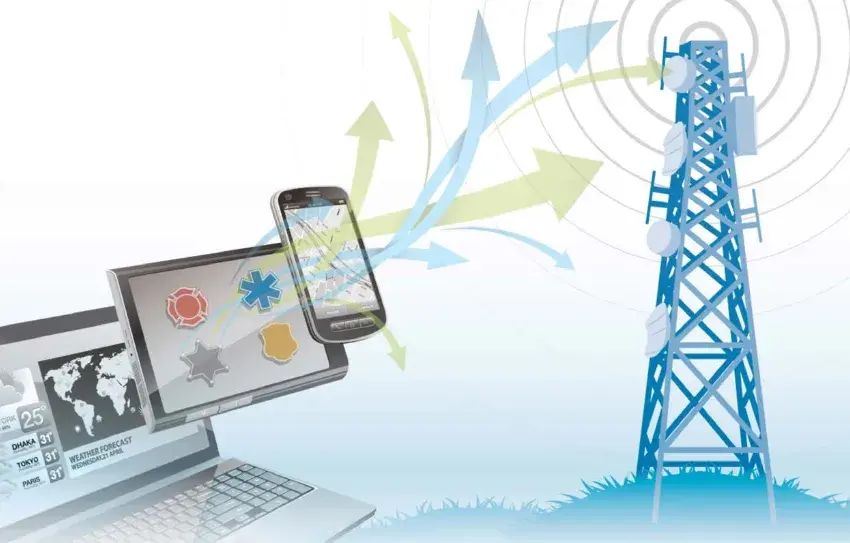Guest blog from the Defense Research and Development Canada’s Centre for Security Science (DRDC CSS)
Emergencies don’t follow rules - they can happen anywhere, anytime. Since the Canada-U.S. border is the longest international border in the world, cooperation between allied emergency response agencies can be particularly challenging.
 The standard radio system currently used can make the information sharing process slow and inefficient. Long Term Evolution (LTE) technology used with cell phones, tablets and laptops speeds up the communications process and makes information sharing in border areas quicker and more effective, potentially leading to less damage and more lives saved.LTE generally refers to wireless broadband or advanced mobile network technologies that increase the capacity and speed of wireless data networks. LTE is the underlying technology of the future Public Safety Broadband Network (PSBN), a high-speed mobile network dedicated to emergency management, in both Canada and the U.S.
The standard radio system currently used can make the information sharing process slow and inefficient. Long Term Evolution (LTE) technology used with cell phones, tablets and laptops speeds up the communications process and makes information sharing in border areas quicker and more effective, potentially leading to less damage and more lives saved.LTE generally refers to wireless broadband or advanced mobile network technologies that increase the capacity and speed of wireless data networks. LTE is the underlying technology of the future Public Safety Broadband Network (PSBN), a high-speed mobile network dedicated to emergency management, in both Canada and the U.S.
“These networks will significantly improve critical emergency communications as well as routine operations of first responders between the two countries,” says DRDC CSS Wireless Technologies Portfolio Manager Joe Fournier, who is responsible for the technical design of CAUSE IV.
CAUSE IV intends to demonstrate that users on both sides of the border can use LTE technology to easily connect to either country’s network, ultimately enhancing operational interoperability and public safety.
In November 2014, the CAUSE III experiment was one of the first times deployable LTE was highlighted as a technology to enhance interoperability and resilience. This technology provided broadband communications to first responders in an emergency scenario in a remote area along the Canada-U.S. border that lacked any form of existing wireless communications.
Fournier spoke about the importance of LTE technology for emergency management, “Broadband mobile wireless communications will provide a means for police, fire, paramedic services and other crisis response agencies to wirelessly communicate and share information, and PSBN will ensure this at the times they need it most.”
LTE has continued to evolve rapidly over the last few years, especially now with features such as Proximity Services (peer-to-peer) and high power user devices on the horizon, he added.
Department of Homeland Security (DHS) Science and Technology Directorate (S&T) First Responders Group (FRG) Program Manager Denis Gusty gave an example of a recent project using the LTE concept. “Chicago LTE is a pilot project operated in conjunction with the Chicago Police Department that integrates several different technologies deployed around the city. The pilot technology was able to compile and deliver information at a much faster pace for the city’s first responders. It is this type of network that we’re trying to replicate in a cross-border scenario with CAUSE IV.”
Cross-border interoperability is essential when a disaster affects both sides of the border simultaneously, especially if responders from one side need to cross over to the other. The CAUSE IV experiment will once again put the LTE networks to the test during a simulated paramedic operational scenario. The technology will be assessed on how well Canadian and American paramedics can carry patients from one country to another while staying in constant communication.
“There should be no borders when it comes to providing lifesaving care to those that need it. Canadian and American paramedics are all dedicated to saving lives, reducing suffering and ensuring the sick and injured get quality care and transport to hospital,” says Deputy Manager Jeff Brooks with the Lambton County Emergency Medical Services Department.
For more information on LTE or the CAUSE series, please contact: First.Responder@hq.dhs.gov or info@drdc-rddc.gc.ca.
Cliquez ici pour lire le blogue en français, disponible sur le site de notre partenaire canadien.
